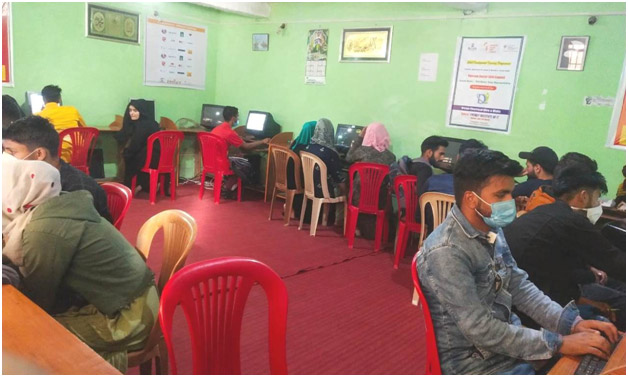
To reduce poverty and vulnerability of the urban poor households by enabling them to access gainful self-employment and skilled wage employment opportunities,resulting in an appreciable improvement in their livelihoods on a sustainable basis,through building strong grassroots level institutions of the poor. The mission would aim at providing shelters equipped with essential services to the urban homeless in a phased manner.In addition,the mission would also address livelihood concerns of the urban street vendors by facilitating access to suitable spaces,institutional credit,social security and skills to the urban street vendors for accessing emerging market opportunities

VDKP Technology Pvt. Ltd. One of the Skilling Organizations, converting unskilled manpower to skilled workforce since 2016, We have contributed to the society by providing Training & Placement to the underprivileged youth so that they can earn their livelihood by their own.
Last year we have trained more than 1000+ students NULM Project in the following sectors.
For the current year we target to impart skills to more than 1500 students In Pan India
The National Skill Development Policy 2015 points to a requirement of 109.73 million additional skilled human resources across 24 key sectors by 2022.The Employment through Skill Training & Placement (EST&P) Component under NULM isdesigned to provide skills to the unskilled urban poor as well as to upgrade their existing skills. The programme will provide for skill training of the urban poor to enable them setting up self-employment ventures and for salaried jobs in the private sector. The EST&P Programme
The broader objective of the Employment through Skills Training & Placement (EST&P) Programme is –
The broader objective of the Employment through Skills Training & Placement (EST&P) Programme is –
a. The base cost with effect from April 1, 2017for training will be as follows:-
b. Cost would be subject to a periodic enhancement of 10% annually or as intimated by the Ministry from time to time.
c. List of trades as per cost categories is given in Annexure I.
d. The hourly rates shall be inclusive of cost components such as:
e. Any deviation from these norms would require approval of the Ministry.
a. Boarding and lodging costs will be provided in following instances:
b. Boarding and lodging costs can be reimbursed as per actuals subject to maximum per trainee per day costs as per table below:
c. The categorization of Indian cities for residential training costs is provided in Annexure II.
To ensure independent and unbiased assessment and certification of trained candidates, costs for certification and assessment shall be payable to an NSQF approved independent third party agency for conducting assessments and certifications. This amount shall be over and above the Base Cost, and shall range from Rs. 600/- to Rs. 1500/- per candidate as decided by SULMs.
In order to enable the newly skilled persons from special groups (except PwDs)4 to settle into their new jobs/vocations under wage employment4, post placement support would be provided directly to the candidate at the rate of Rs 1500/- per month for the following durations:
PPS @ Rs.1500 per month per person Men Women
Placement within district of domicile 1 month 2 months
Placement outside the district of domicile 2 months 3 months
Provided the placement is made within three months of certification and after post validation of placement of the candidate.
PPS cost for Persons with disabilities shall be as per point 3 of Annexure – III
For candidates undertaking training under EST&P, support for uniforms is Permissible up to Rs. 1000/- per candidate in case of a training course having durationof 6 months or less, and Rs. 2000/- per candidate in case of a training course having duration of more than 6 months. Support for uniforms for PwDs shall be as given in point 4 of Annexure III.
a. Placement should be within 3 months of completion of training.
b. Once placed, remuneration/ incremental remuneration per month.
c. Whether continues to work in the same or higher job role till end of the tracking period (whether with same or diff erent employer).
d. If there are periods of unemployment between diff erent jobs, duration of such gaps and reason for leaving earlier job without having a job in hand.
The candidates selected for training under EST&P component of NULM should be from the urban poor households only. The following conditions need to be adhered to in selection of the candidate–
a. S/he should not have undergone skill development training under the SJSRY / NULM in any other trade during the last 3 years. The candidate can however be provided advanced training on the skills acquired in any previous training.
b. The candidate should meet the minimum qualification as per requirement of the training curriculum approved by the State Executive Committee.
c. The percentage of SC and ST candidates being trained should not be less than the percentage of SC and ST population in the town.
d. Out of the total beneficiaries for the State/UT under EST&P; minimum 30% should be women, minimum 15% should belong to the Minority community and minimum 3% of the candidates should be diff erently-abled. However based on the trade and area of implementation, if the above requirement of minimum percentage cannot befulfilled through common training programmes, specifi c training programmes targeting the above vulnerable communities maybe undertaken by the SULM.